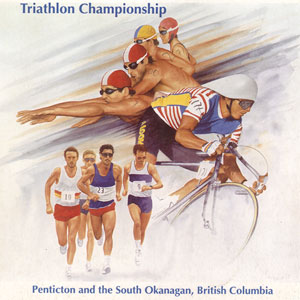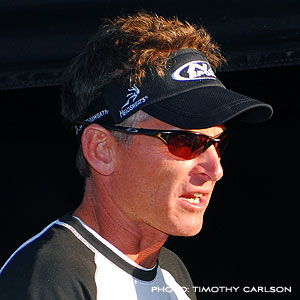State of Tri
The Tour de France began in 1903 and triathlon’s version of that was 1978, on the Island of Oahu, when 16 eager fellows jumped into the Pacific Ocean to commence a leg roughly analogous to the Waikiki Rough Water Swim. Every sport has its chroniclers and I don’t know that I’m the best equipped to do that for triathlon but I’ll try, at least to bring us to the point we are today. It’s important to view this and any movement in its historical context and I’ll try to create a context now, pursuant to making my best guess as to where we are and where we’re going, as a sport. I’m writing this chiefly for those who try to make a living in our sport and who need to get a sense of where we are so that they can forecast accordingly. But anybody’s welcome to read.
My first swim-bike-run race was in 1980 and that happened just several months before participating in the first Ironman taking place in Kona, in 1981. That first race I did was called The Human Race and a vestige of it still takes place today in Back Bay in Newport Beach, California. Just below is a pic of me finishing, in 4th, outsprinted up the beach by Slowtwitch Forum member “Monty,” who I did not know at the time. Yes, it finished up the beach, bike-run-swim.
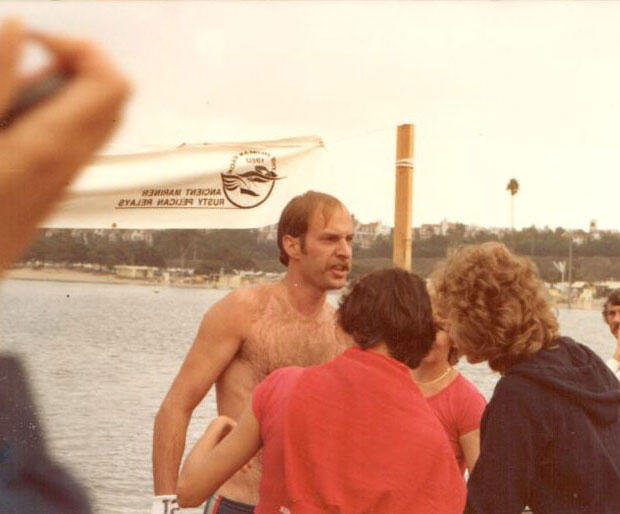
That first Ironman held in Kona, in 1981, attracted 326 contestants, more than triple the number that showed up for the last of the 3 races in Oahu in 1980. As some observers know, we have a sport for 2 reasons, beyond the fact that it’s just a great activity. Reason 1: the media liked it. The 1979 race was written up in Sports Illustrated in a way that caused the production team at ABC’s Wide World of Sports to send a crew over to film the thing. Reason 2: Just when ABC thought this oddity might have run its course, Julie Moss collapses in a heap, yards from the finish line in October of 1982 and history is made and that race has never not been nationally televised since. The race entries went from 300+ to 500+ to 800+ from February 81 to February 82 to October 82 – the race was held twice in 1982 as it moved to October. Entries and interest continued to climb unabated. The next two images below are of me coming in off the bike at T2, and that race had a split transition, with bike-to-run happening at the old Kona Surf Hotel in Keahou.
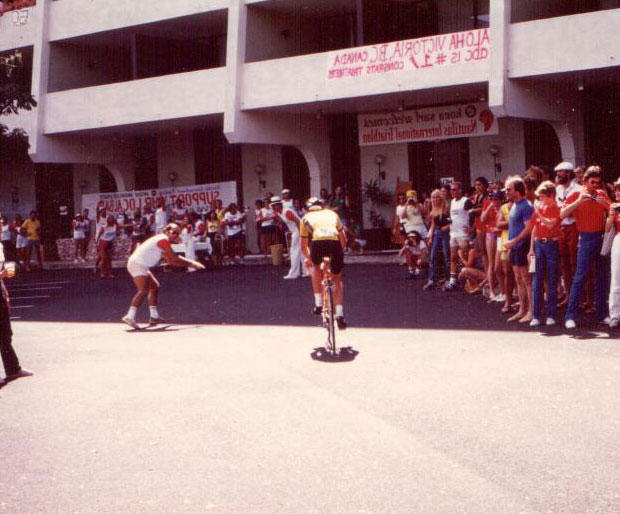
The Run-Up
I think 1982 is really when the sport officially started. I raced a thing called the USTS in Long Beach in 1982, that acronym standing for the United States Triathlon Series. The USTS became a fixture during the 1980s and the sport rocketed largely on the back of interest in Hawaii and on that USTS national platform. That series was founded by Speedo executive Carl Thomas (who now runs H2O Audio) and Jim Curl (who runs the culturally cool Jake’s Triathlon in Jamaica). Curl and Thomas built an outstanding events team headed by Flo Bryan and it’s still a marvel to me that they were able to put on that show, city-by-city. Curl built a phonebook thick race director’s manual that he never has published but were he to do so would instantly be today’s best race director’s guide even though it’s 30 years old. Just as Molina, Tinley, Allen and Scott were the right men at the right time for triathlon on the race course, Curl and Thomas were the right men building that race course.
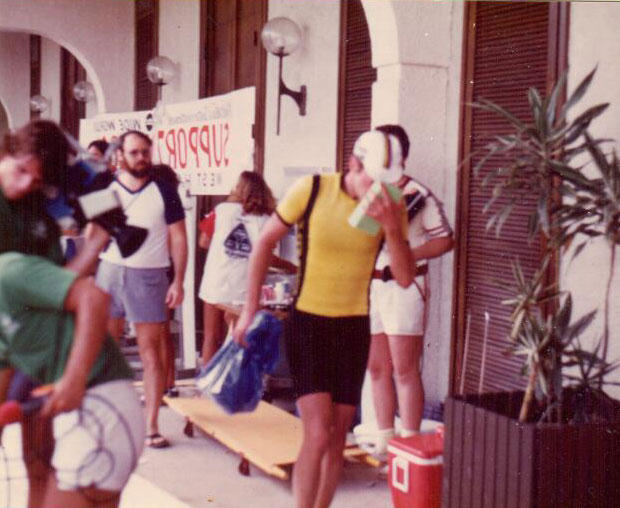
I believe Ironman creates its own ecosystem, wherever it goes. One example is Utah. Ironman held its first race in Utah in 2002. It was in Lake Provo and a contestant died in the swim and that is why there is no Ironman in Greater Salt Lake. That was also the last race in Lake Provo over the Ironman distance and today there is no Ironman race in Utah at the full distance. However, that one race in 2002 spawned a community and an infrastructure that exists and thrives to this day. This is the way in triathlon. Ironman comes, you spectate, you volunteer, next year you race. Triathlon in general and Ironman in particular proselytizes not by talking, just by being. Nobody needs to urge you to do a triathlon; you make that decision yourself just by watching one.
The experience that was Ironman was replicated all over the U.S. because so many of triathlon's pioneer race directors, like Dave McGillivray, Graham Fraser, Rob Vigorito – I could move across the country naming RDs in just about every state – participated in the Hawaii race in the early 80s, and came home and put on a race of their own. The image below is from the 1981 Lakeside Nautilus Second Sole Triathlon, in Reno Nevada. I’m the guy out of the saddle in the striped Dolphin run shorts and leather hairnet helmet (cool, huh?). This was in August. Mind, I raced Kona in February, and by August of that same year I was producing a triathlon. I shot the gun, got on my bike and started racing. This was the way the sport started, a lot of us just bringing a slice of Kona’s magic back home with us.
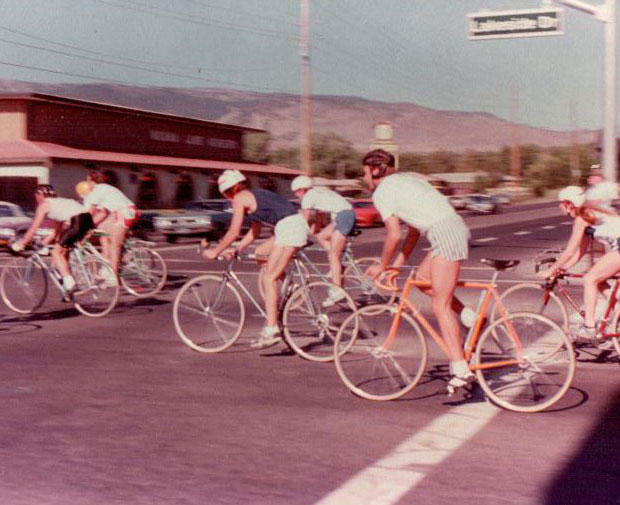
The other big notable boost for triathlon in the early years was the USTS. It came to Chicago, Atlanta, Boston, Tampa, Seattle, Portland, up and down the California coast, each year, about a dozen races per year. Some of today’s big races started as USTS races. Life Time Chicago started as a USTS race. This was the template for how to build a triathlon, and triathlon was built during the 1980s. St. Croix was not a USTS race but was started by the USTS people.
If you are interested in this sport’s history, I highly recommend moving over to Trihistory.com, the site lovingly published by Scott Tinley and Mike Plant, and you’ll get a better sense of our sport’s history than you can anywhere that I’ve seen.
I moved from participant to manufacturer in 1986. On the Trihistory site there’s an article about how we got wetsuits in triathlon (in the old old days, pre-1986, most of us just froze our arses off), and I’ll let that article explain some of my own early history. The sport was growing and going strong at that time, and continued to build through 1989 and the Ironwar in Kona. In retrospect, it was shortly after this that the sport of triathlon leveled, and in some parts of the U.S. it was way worse than that.
The Decline
The 90s were a hard decade for triathlon in the U.S. In this country, the de facto national championship had been the USTS Nationals, which really hit its stride when it moved to Hilton Head, SC, in the mid-80s. That lasted until the end of the decade, and that last half of the 1980s were boom years for the USTS, with a nice multi-year deal with Anheuser-Busch (from about 1984 through the decade it was the Bud Light U.S. Triathlon Series); the Coke Grand Prix (the glue that kept the pros moving from city to city to accrue points toward an annual payout); and a nice deal with AT&T.
Triathlon in the Olympics, the Olympic distance, wave starts, most of our current rules of competition, all happened at or largely because of the USTS. But nothing lasts forever and by 1990 the wheels were starting to come off. The USTS lost or decided to move its national championship venue out of Hilton Head and the bloom was off the rose among sponsors. Deals were not renewed. The USTS had “learned” how to exist and make money off of an overhead structure that was, in retrospect, too high. That series put on its final race in 1993, in Maui, and the national glue that this series represented was lost and triathlon suffered for almost the entire decade of the 90s.
Why? What happened? I don’t know. Some of us remember the great mid-management culling in 1991 or thereabouts, where America’s corporate giants just decided that an entire level of management, like a horizontal slice of a layer cake, could be done away with. Bill Clinton got into office largely on the basis of an economic malaise that doomed the reelection hopes of George Bush and that downturn and layoff coincided with the bad years at the USTS, from 1990 thru 1993.
If an economic downturn helped flatten triathlon, okay, but I think the sport had just run out of gas. It has gone about as far and as fast as it could on one tank. It needed to take a breather and, boy, what a breather! By 1997 USA Triathlon – another entity you can largely thank the Bud Light USTS for building – had about 17,000 annual members (annual membership is solidly into the 6 figures today). If you lived in Minnesota or Michigan you might have had 3 triathlons taking place in your entire state over the course of a year. It was bleak. It was hard to be a triathlete. This image below is of me, in Kona, in 1981, during the race. I’m riding a high 5-hr split, and if the pic were taken last year there would be crowds around me. Not back then. The mid and late 90s were kind of like this – it felt sometimes like we were back where we started.
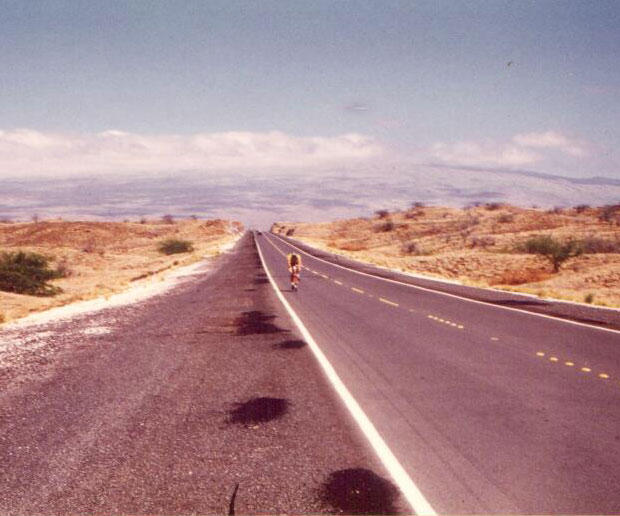
Those of us in the business were hanging on by the seats of our pants. Big races were going away. Even in Southern California – triathlon’s mainstay at the time – our big early season race in Mission Viejo put on by one of triathlon’s early stalwart RDs, Michael Braunstein, went away.
On top of everything else we had a crisis, in the early and mid 90s, in insurance availability. Most of you remember the credit crisis in 2008 and we're still working our way out of that (did you try to get a mortgage or equity line between 2008 and 2011?). What you might not remember is that it was very hard to get a business liability insurance policy for a significant part of the 1990s (for any kind of liability, including race insurance). Later in this series I'll be writing about USA Triathlon, and the pluses and minuses for RDs and AGers of a USAT affiliation. One big plus is an institution that will be there to offer insurance to RDs when times are lean. A lot of races went away in the mid 90s just because it was hard to get a policy.
The Resurgence
The sport started to climb out by 2000. Why? I don’t know. I think the a economy had a lot to do with it, and while I have no evidence to support this I think that mid-level layoff that happened in the early 90s made the ground fertile for the dotcom boom. Perversely, but fortuitively, this layoff provided a new, retooled economic engine a lot of motivated and talented people ready to go into business for themselves or for start-ups. But I don’t know. Maybe triathlon in the Olympics had something to do with it. Watching the Olympic triathlon open the Sydney games was a thrill for a lot of people.
I think a lot of it goes back to that ecosystem an Ironman builds. Ironman races were incepted in Florida in 1998, Lake Placid in 1999, Couer d’Alene in 2003 and so on. Just as or more importantly was the upsurge in the championing by Ironman of the 70.3 distance. It had been a mystery to a lot of us why more RDs did not put on these races, since the few that existed were so often successful, notably but not limited to the Wildflower and Eagleman triathlons, as well as smaller but cult popular races like St. Croix, Superfrog and Buffalo Springs.
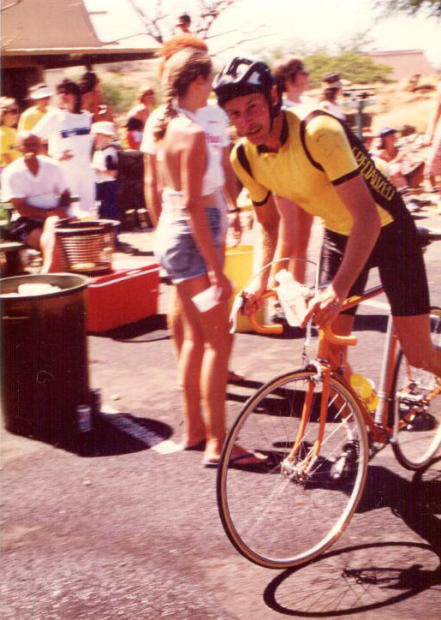
Whether you are an Ironman lover or an anti-establishment iconoclast, it seems to me undeniable that these races form an ecosystem around them. You can’t have 2,500 athletes show up for a race weekend and not attract the interests of cities, convention and visitors authorities, retailers and manufacturers. There are now 32 races that are 70.3 branded in North America, and 16 Ironman full distance races (if you include Mexico in North America). Each of these races creates its own ecosystem: local clubs, retailers, coaches, informal training events such as weekly rides and runs, and to some degree a calendar of events that represent an opportunity for those interested in triathlon to either get their feet wet, or who just don’t want or can’t spend or can’t commit to the Ironman economy.
If you read Crisis in Canada, specifically the part where Graham Fraser branches out from his Ontario-based regional triathlon series and buys Ironman Canada, this is the beginning of something important. Fraser's partnership with Ironman, leading to the inception of race after Ironman race in North America, was in retrospect critical to triathlon's turnaround on this continent, because of the ecosystems each race created. When the race in Lake Placid was created metro NYC was not a hub of triathlon. That metro area was half the size of Southern California in triathlon terms. Now it's almost twice the size, and that's with SoCal's tri population steadily growing. That's the power of an ecosystem one race can help create.
Counter-cyclical trends
I have no stats at my beck and call to support this, but in my recollection triathlon has been at least vaguely counter-cyclical with running and mountain biking. I don’t know why. Maybe it’s just a coincidence. But it seems like we as a community can’t hold too many ideas in our head at once. We’re either runners or mountain bikers, or we’re triathletes. But not, as a society, at the same time. Strong brands can buck that trend, and Rock 'n' Roll Marathons seem to do well regardless of the boom and bust cycle, and Ironman is the same. But were I to just make a general statement I’d say that running did especially well in the 70s, the 90s, and is doing very well in the teens, now, and triathlon did very well in the 80s, and in the aughts. I think MTB was, like running, strong in the 90s and is again strong now.
In the above analysis I’m referring to the market in the United States. Triathlon in North America is also counter-cyclical with triathlon in other areas of the world. Triathlon was strong in the U.S. in the 80s, and in the aughts, but in the 90s when we were languishing here in America triathlon was growing like crazy in Europe. I think the growth slope has flattened in the U.S., but in Asia – places like the Philippines – in Australia, and in Europe triathlon has seen terrific growth. If you look at the triathlon opportunities in Australia in 2010 and you look at them today, in 2014, it was famine and now it’s feast. Last week we had two races take place on the same weekend in the Western Mediterranean – Portocolom in the Balearics and a first-year race in Cannes. That new Cannes race filled at 1200 entrants and Protocolom had 700. Those are very strong numbers considering the difficulty each venue had as a TriStar race 5 years ago. I think TriStar was a case of bad timing. Triathlon has really hit its stride in Europe, and Finland, Sweden and the UK are busting at the seams.

Indeed, there is so much pent up demand in the UK that this might be the single largest cohort racing in Continental Europe when you consider what nationality is showing up most often at a race other than the nationality of the country hosting that race. In other words, at a race in Germany you’re most likely to see Germans, of course, but behind them you’re very likely to see the British before any other nationality. Likewise for races in France, if you take out the French it’s the British showing up before the Spaniards and the Germans.
You’re also seeing a lot of Russians at European triathlons. If we just can avoid another cold war we’re going to see Challenge, Ironman and other triathlons in the Baltic countries, in the Ukraine, in Slovenia, Poland, and eventually in Russia.
As you will see in future installments of this series, we are flattening, here, in triathlon participation, in America and in Canada, at least among adult participation. But I’m not discouraged because if you look back at the mid 1990s, we were cratering as a sport in North America and we pulled out of it. This time, we’re not cratering. We’re leveling. And we’re doing so after another, much worse, economic downturn (that we are in many ways still in). And after a much larger upsurge. And, we don't have an insurance liability crisis. We have some other challenges to situating races in attractive venues, and I'll get to that. But we're well positioned to start a steep climb in race participation if we do the things we ought to do.
Even though this is a soft flattening, there are some concerns. This flattening has occurred in spite of this paradigm of new Ironman or 70.3 races spawning ecosystems. The rate of inception of these races is, if anything, accelerating, but the sport is not growing at that rate. Why? There is evidence that what's doing well are the big races, the expensive races, while there is a hollowing out of the less expensive, local races. We’ll talk more about that in a future installment.


